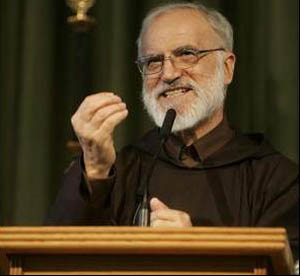Resurrection of the Heart
>> Friday, March 7, 2008

Resurrection of the Heart
Gospel Commentary for 5th Sunday of Lent
By Father Raniero Cantalamessa, OFM Cap
ROME, MARCH 7, 2008 (Zenit.org).- The stories in the Gospel were not only written to be read, but also to be relived.
The story of Lazarus was written to tell us: There is a resurrection of the body and there is a resurrection of the heart; if the resurrection of the body will happen "on the last day," that of the heart happens, or can happen, everyday.
This is the meaning of the resurrection of Lazarus that the liturgy wishes to point out to us in the first reading from Ezekiel about the dry bones.
The prophet has a vision: He sees a vast field of dried bones and understands that they represent the low morale of the people. People were saying: "Our hope has vanished, we are lost." God's promise is directed to them: "Behold, I open your tombs, I raise you from your tombs. […] I will fill you with my spirit and you shall live again."
This example is also not dealing with the final resurrection of the body, but the resurrection of the heart to hope. Those cadavers, it is said, came back to life, began walking and were "a great army, exterminated." It was the Israeli people who began hoping again after their exile.
From all of this we can deduce something that we also know from experience: That we can be dead, even before we die, while we are still in this life. And I am not only speaking of the death of the soul caused by sin; I speak also of that state of a total absence of energy, of hope to fight and to live that one can only call: death of the heart.
To all those who for various reasons -- a failed marriage, spousal infidelity, the sickness of a child, financial ruin, depression, alcoholism, drug abuse -- find themselves in this situation, the story of Lazarus should resound like the bells on Easter morning.
Who can give us this resurrection of the heart? For certain afflictions, we know that there exists no human remedy. Words of encouragement often fail to suffice.
Even at the house of Martha and Mary there were "Jews who came to console them," but their presence didn't help. We need to "call for Jesus," as Lazarus' sisters did. To invoke him as people buried under an avalanche or under the ruins of an earthquake who, with their cries, get the attention of the rescuers.
Oftentimes people in these situations are not able to do anything, not even pray. They are like Lazarus in the tomb. They need others to do something for them. Jesus once spoke these words to his disciples: "Heal the sick, raise the dead" (Matthew 10:8).
What did Jesus mean? That we must physically raise the dead? If that were the case, history shows us that the number of saints who put this into practice could be counted on our fingers.
No, Jesus meant, above all, those whose hearts are dead, the spiritually dead. Speaking of the prodigal son, the father said: "He was dead and has come back to life" (Luke 15:32). He could not have been talking about physical death, if he had come back home.
The command to "raise the dead" is addressed to all of Christ's disciples. Even us! Among the works of mercy that we learned as children, there was one that told us "to bury the dead." Now we know that we must also "raise the dead."
[Translation by Mary Shovlain]
* * *
Father Raniero Cantalamessa is the Pontifical Household preacher. The readings for this Sunday are Ezekiel 37: 12-14; Romans 8: 8-11; John 11: 1-45.
Permalink: http://www.zenit.org/article-21995?l=english




0 comments:
Post a Comment